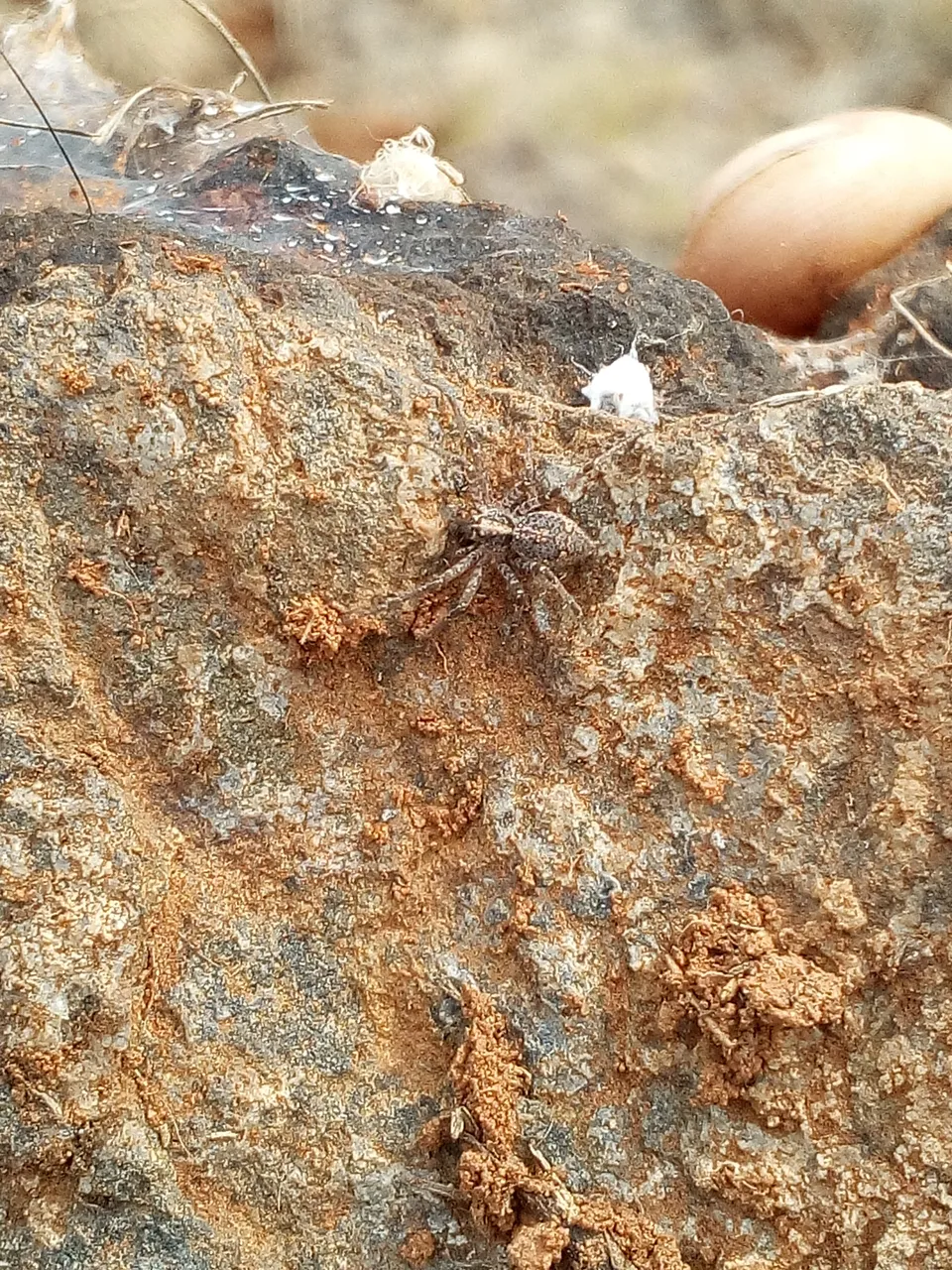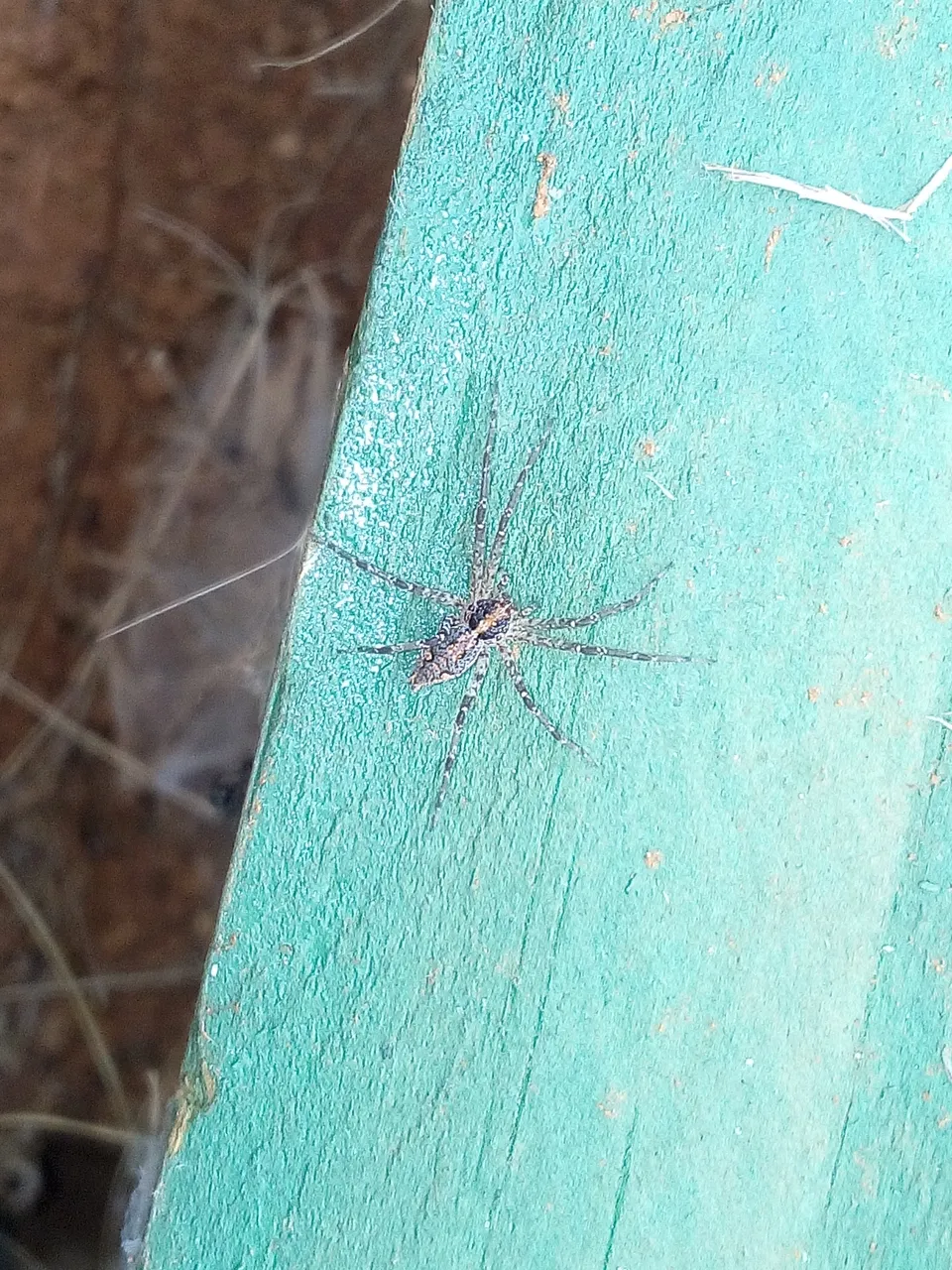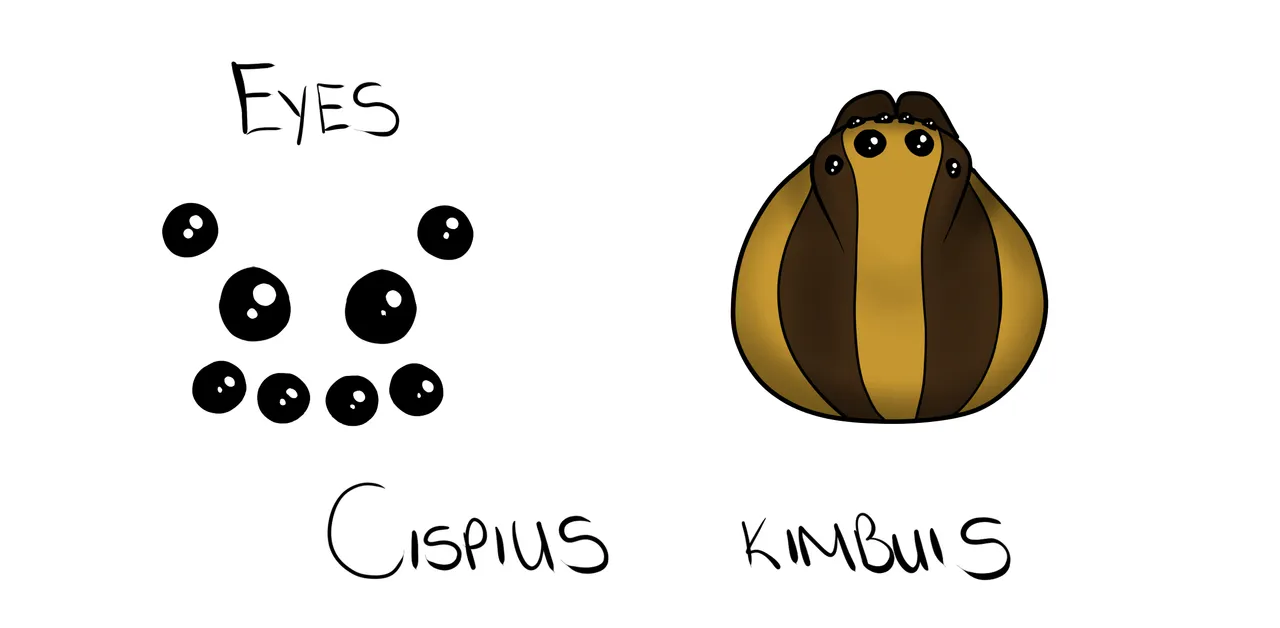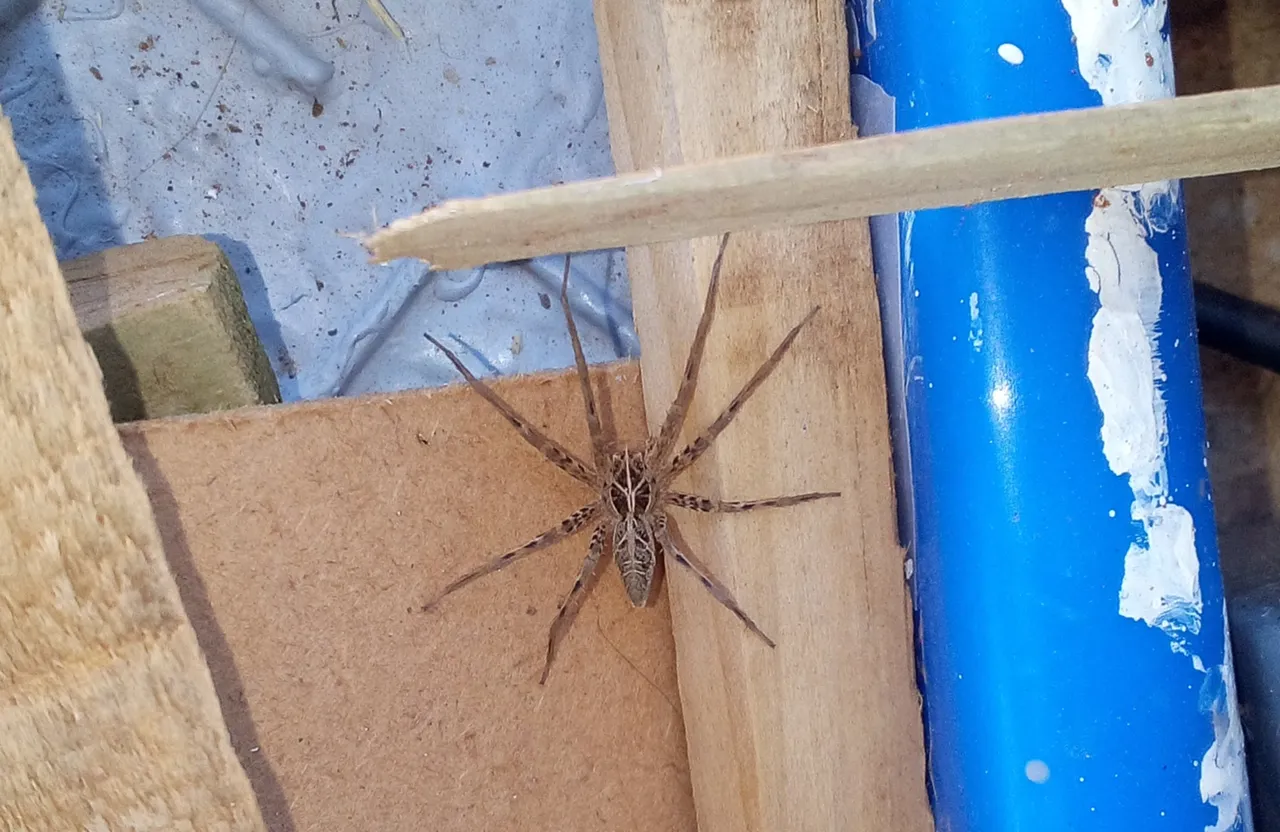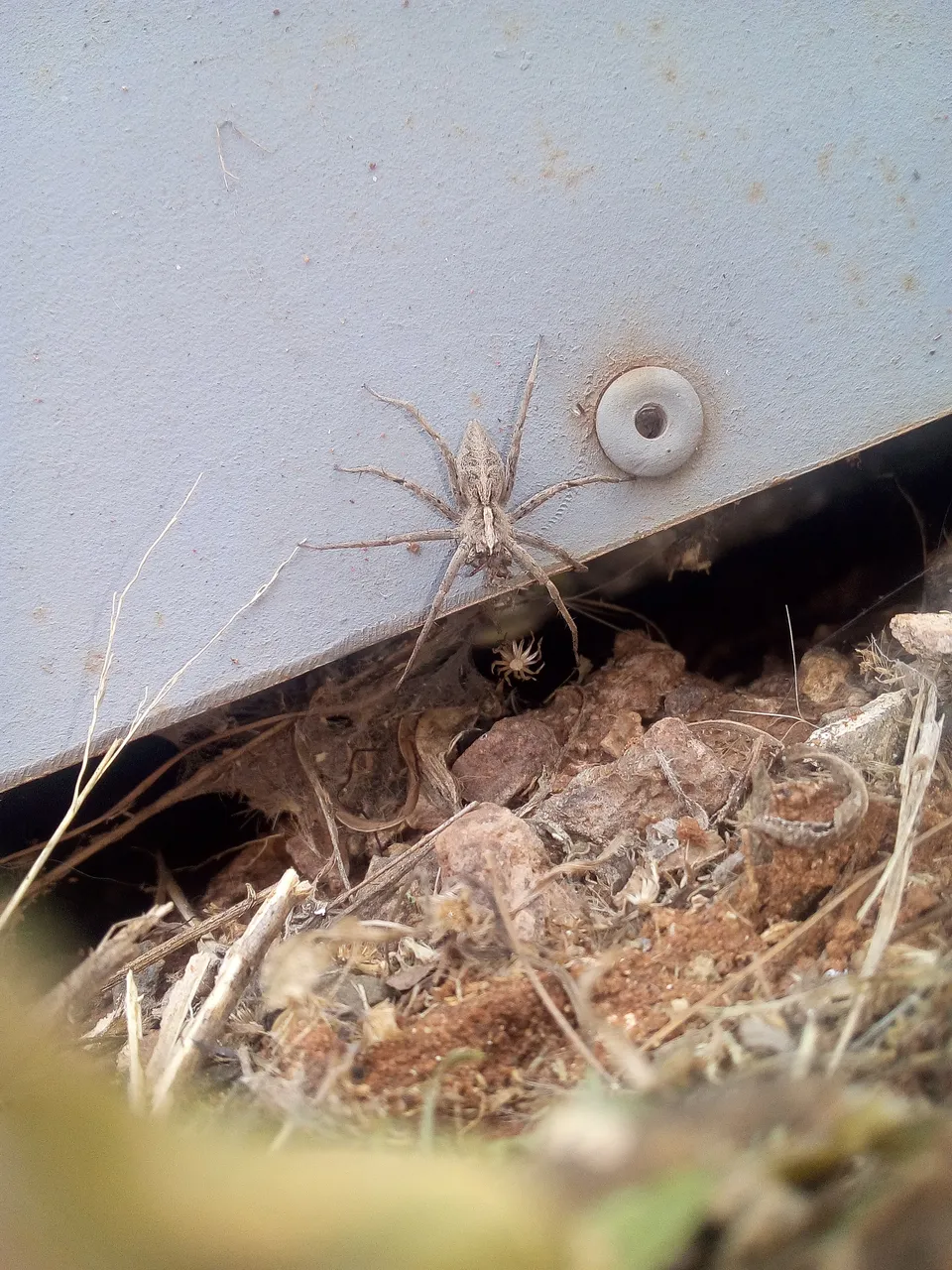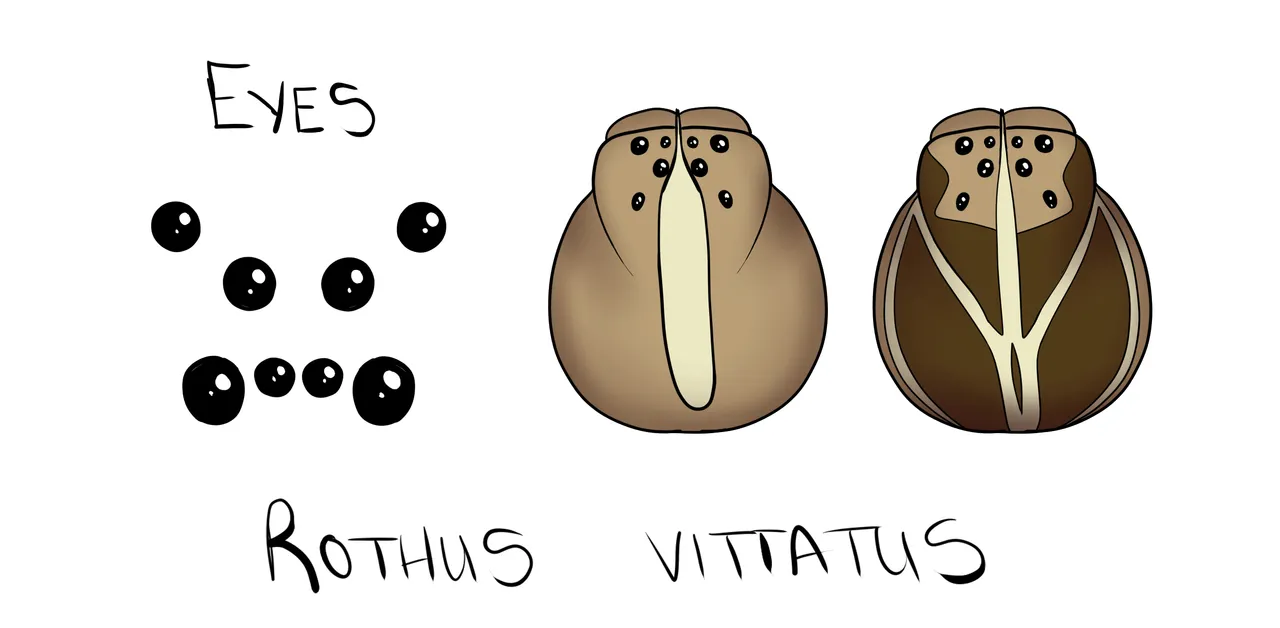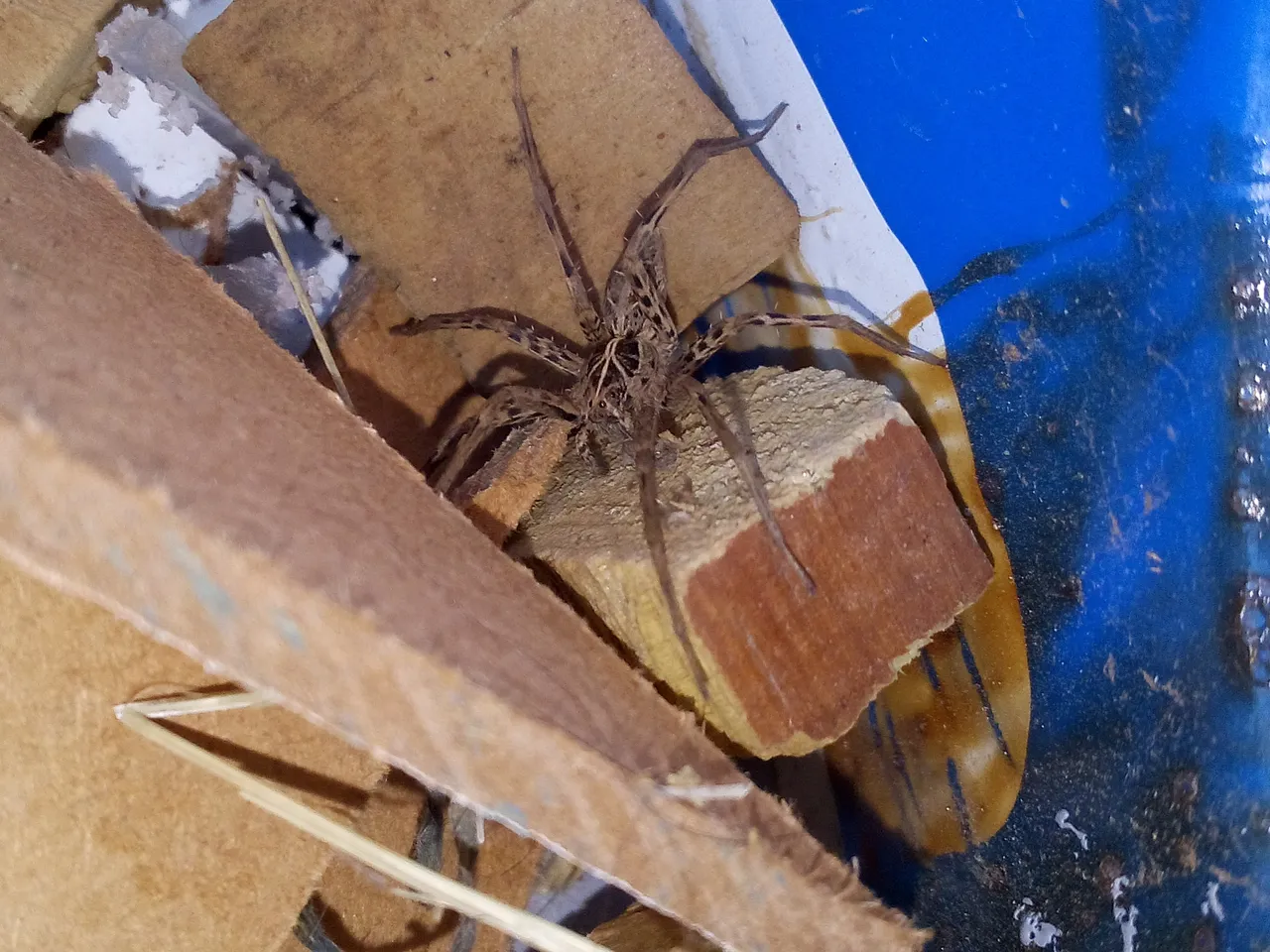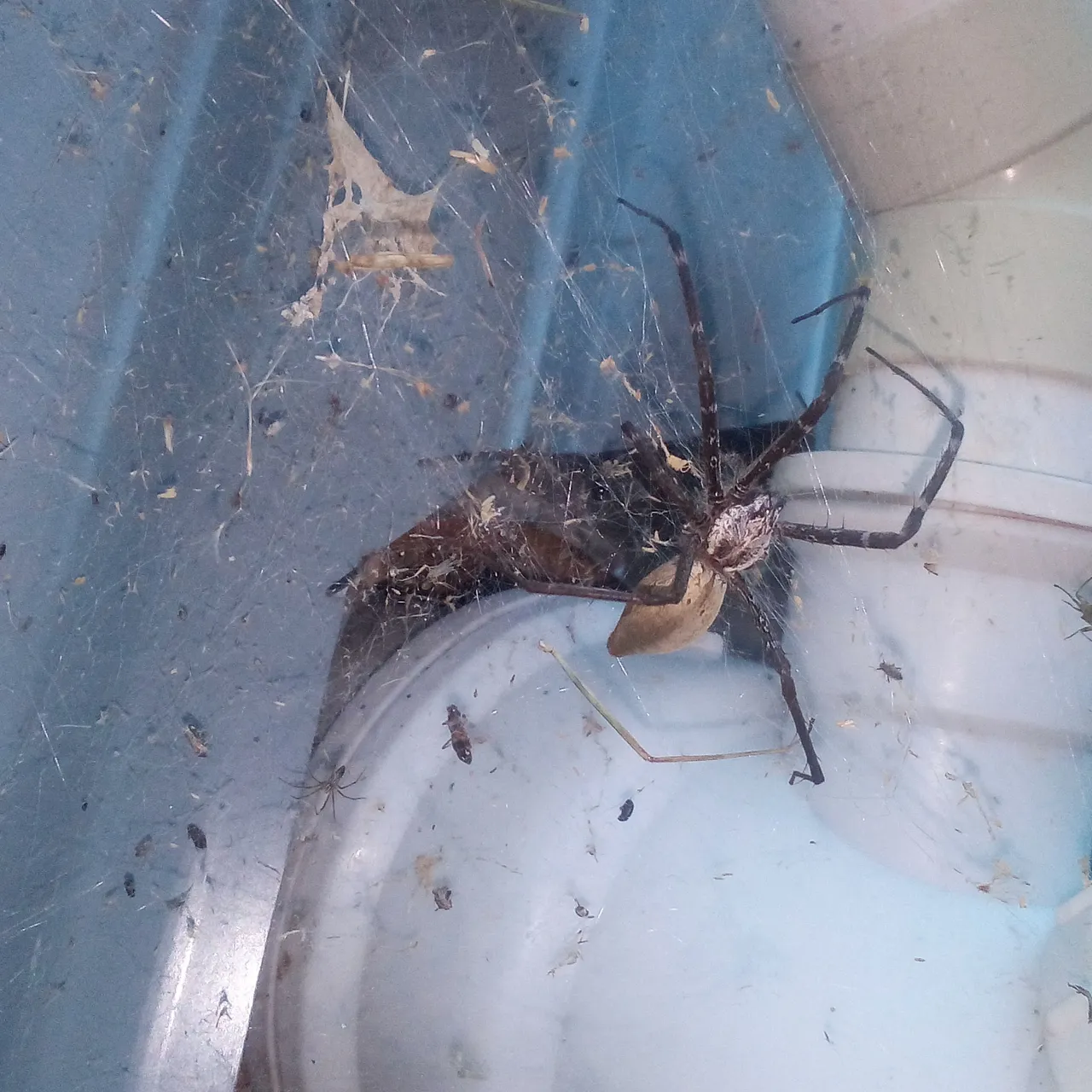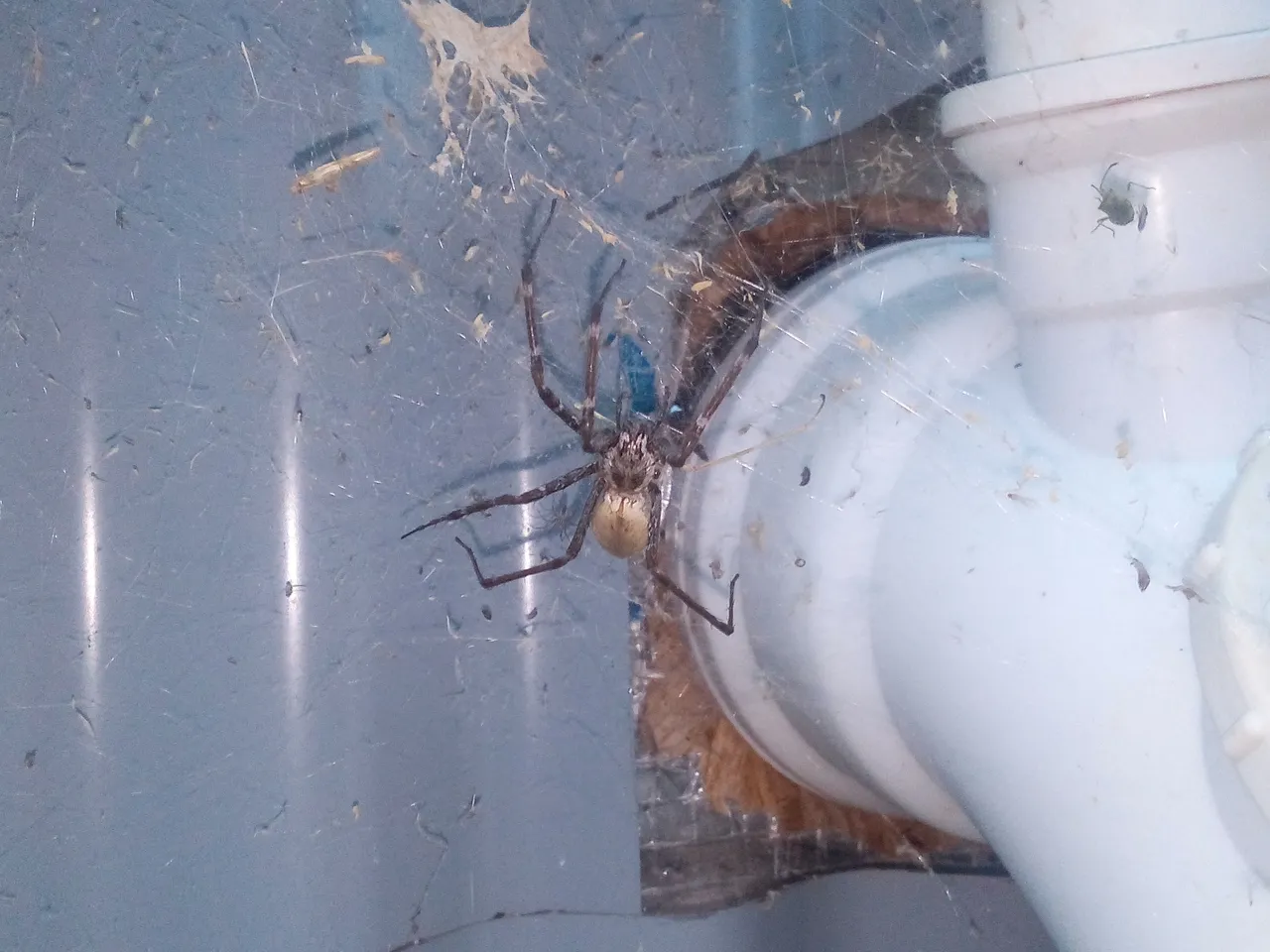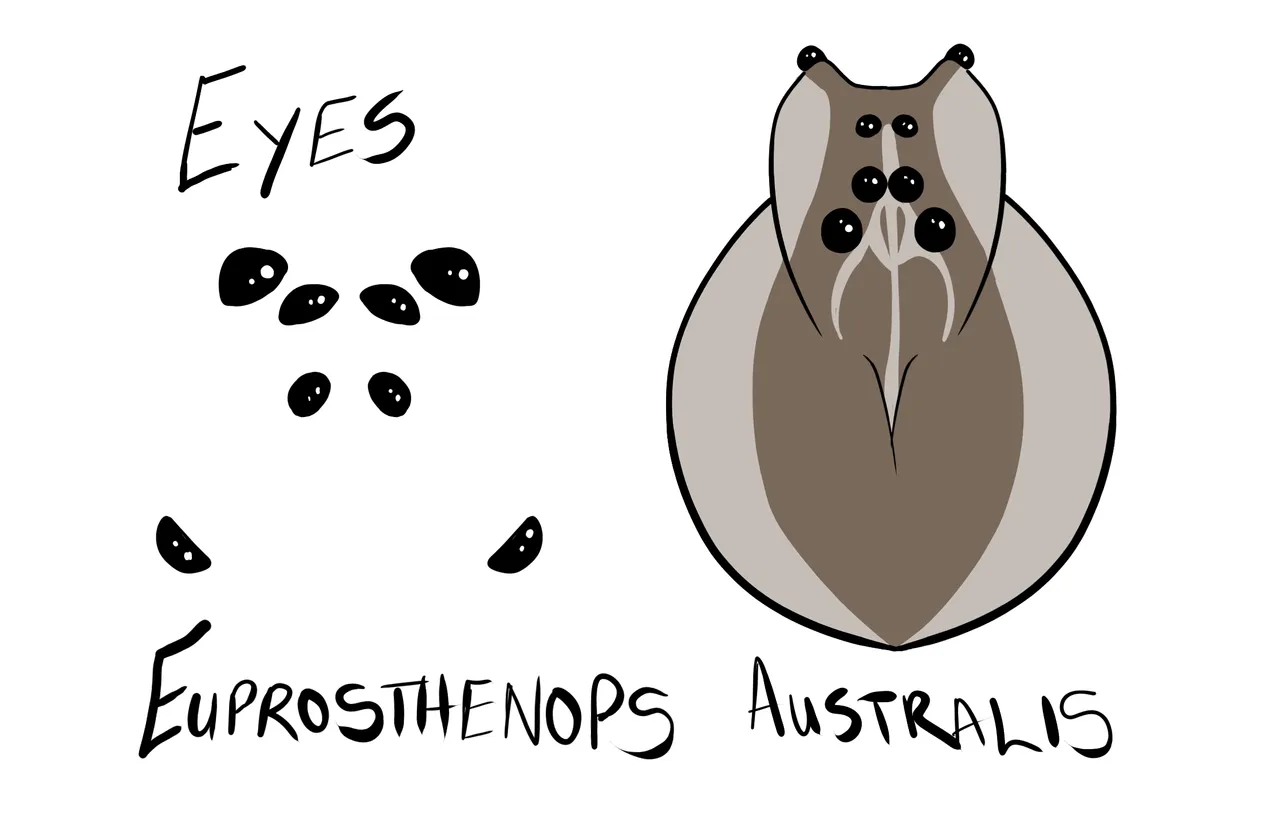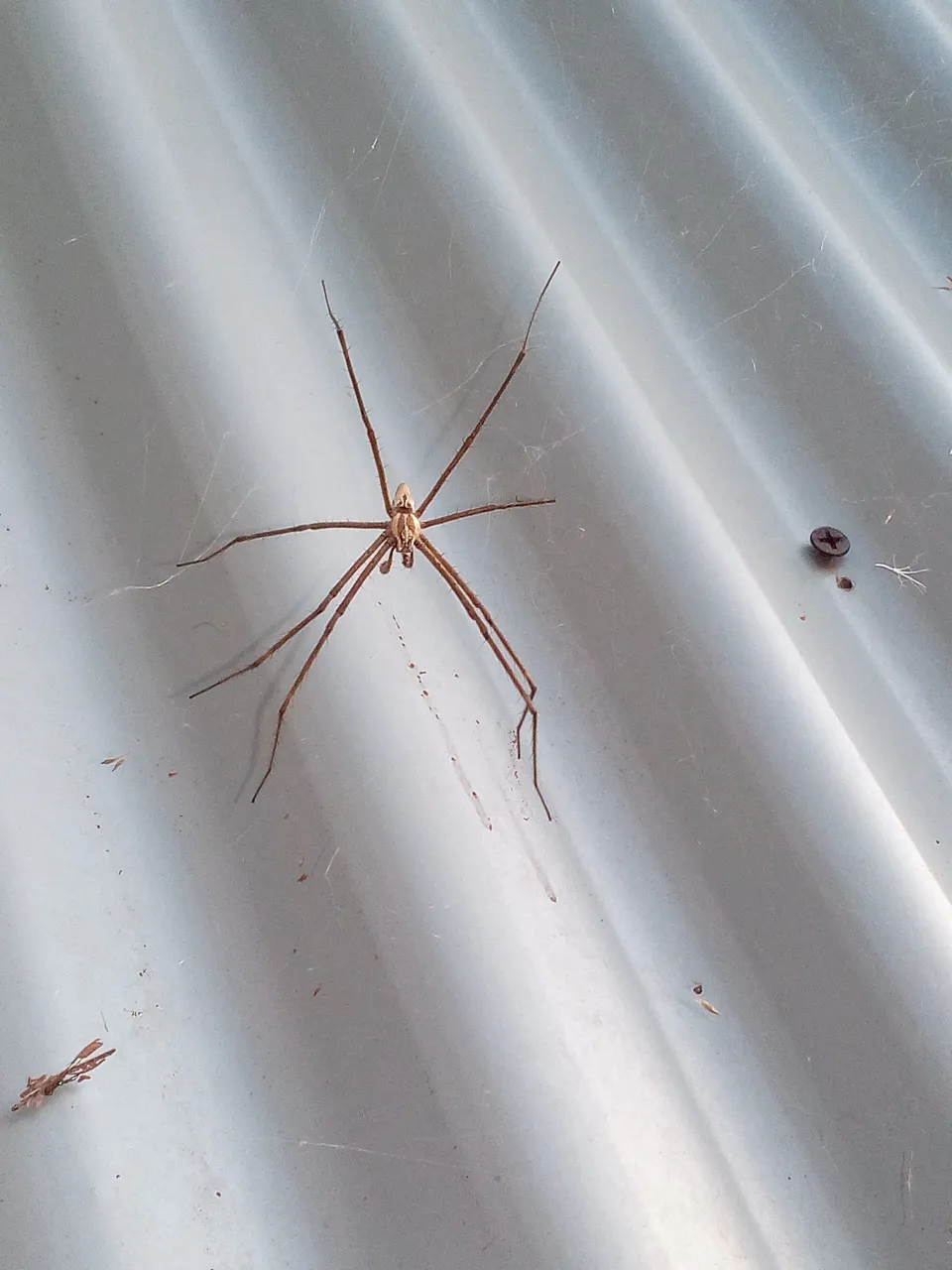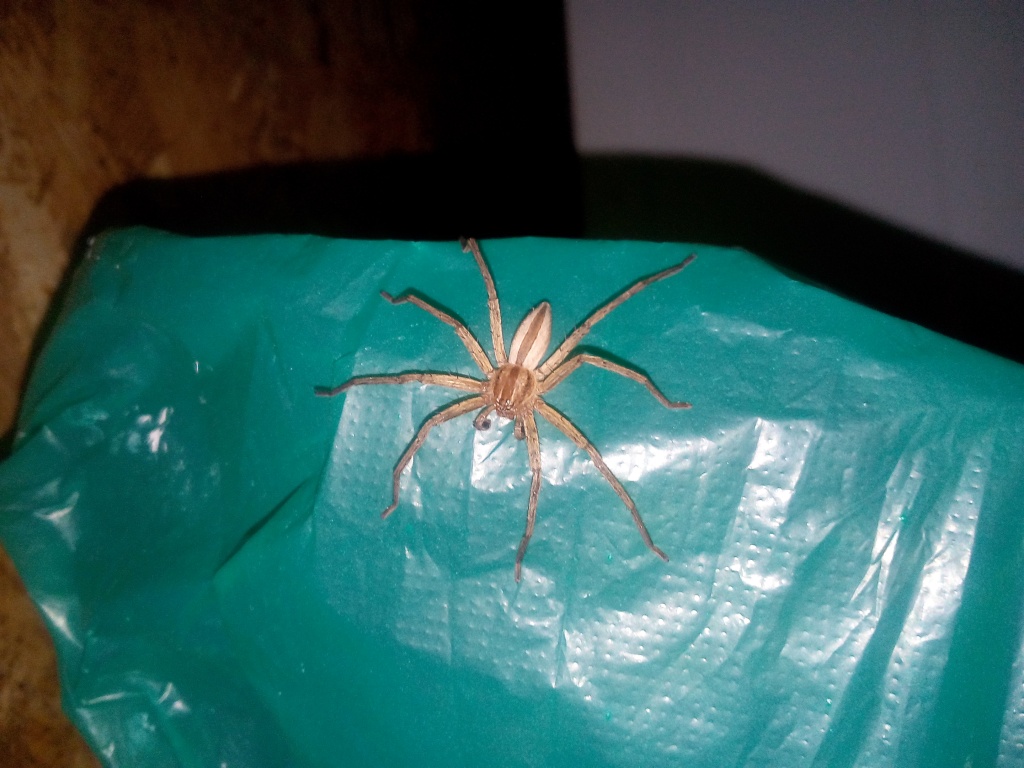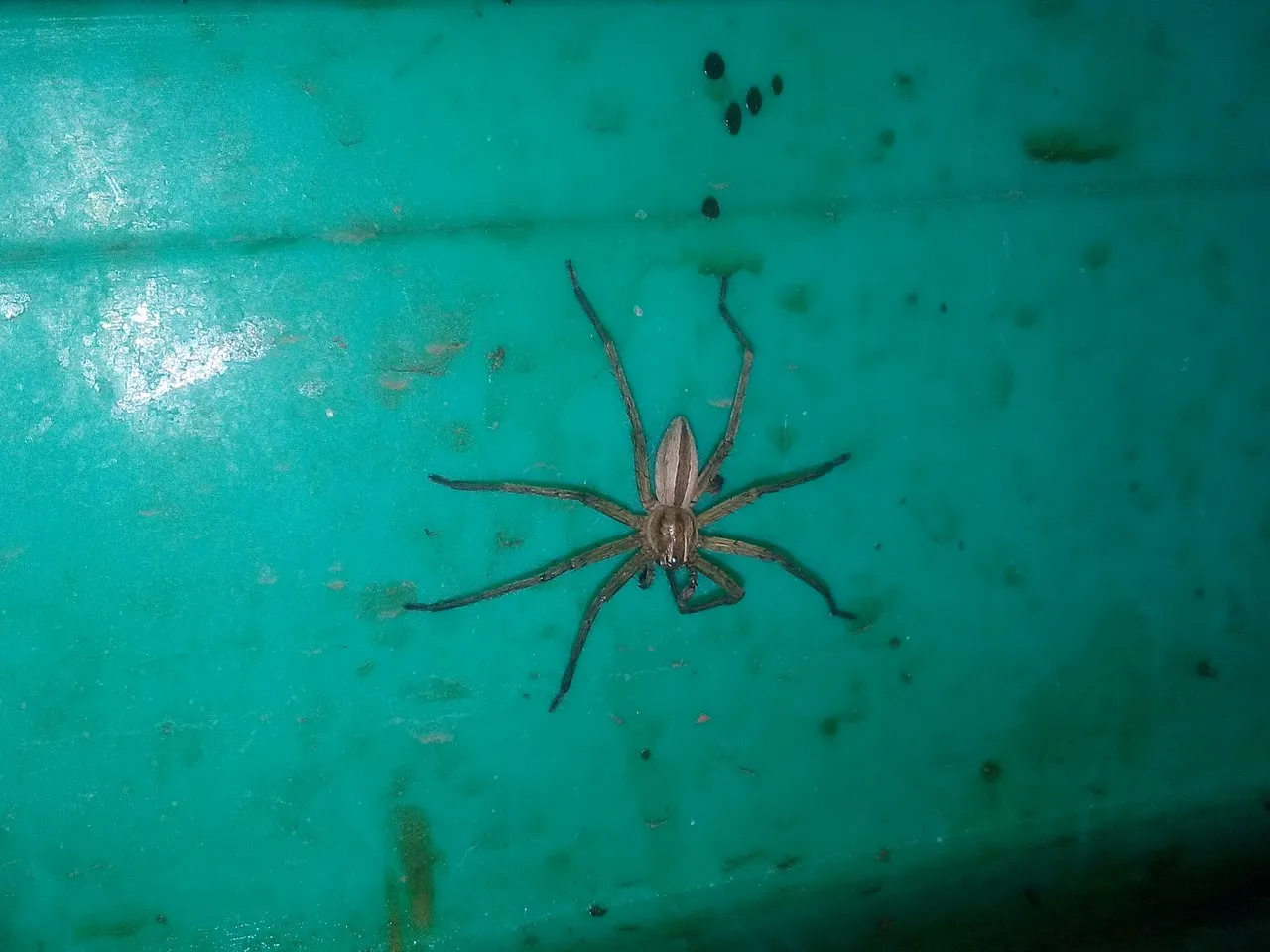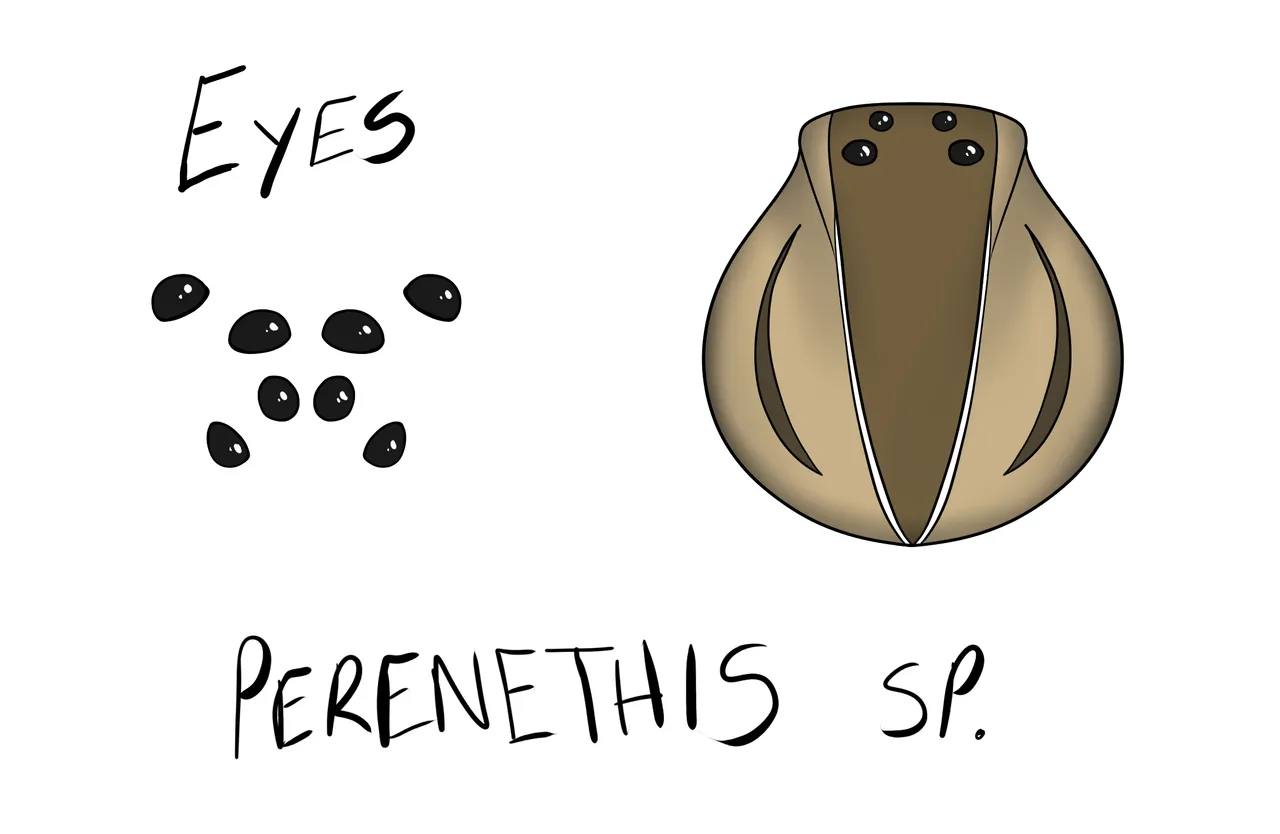Taxon:
- Class: Arachnida
- Order: Araneae
- Infra-Order: Araneamorph (true spiders)
- Family: Pisauridae
- Genus: Cispius
- Species: C. kimbuis
Female
Around 6mm in body length. Leg span of approximately 10mm diagonally.
Cephalothorax:
Carapace slightly longer than wide, yellowish with two dark bands, centre raised.
Abdomen:
Tear-drop shaped, yellowish brown. Dorsal with two prominent white spots on either side of heart marking, brown rock-textured markings, yellowish circle either side of posterior chevron-like pattern, and faint white spots down centre. Venter yellowish.
Legs:
Yellowish and mottled and banded.
Male
As in female, abdomen smaller, tarsi slightly darker and swollen on pedipalps, legs thinner and longer.
ABOUT THE GENUS
These spiders are commonly known as small funnel-web nursery spiders, and there are only 3 described species in South Africa. They are medium-sized spiders, averaging at 7mm in body length that construct sheet-like webs with a thin tunnel in which they can retreat to. Cispius spiders are often found under bushed and debris on the ground, though rarely do they nest in holes higher in altitude. These spiders are also nocturnal.

